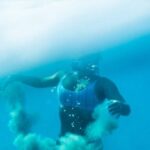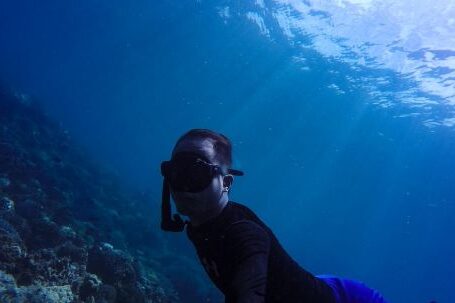Underwater navigation can be a challenging skill to master, especially when relying on a compass. However, with the right techniques and practice, you can become proficient in navigating underwater using a compass. In this article, we will explore some advanced techniques that will help you navigate with precision and confidence in the underwater world.
Understanding the Compass
To effectively navigate underwater with a compass, it is crucial to have a solid understanding of how the compass works. A compass consists of a magnetic needle that aligns with the Earth’s magnetic field. The needle always points north, allowing divers to determine their heading.
Maintaining Proper Buoyancy
Buoyancy control is essential for accurate compass navigation underwater. It is crucial to maintain neutral buoyancy to avoid unnecessary movements that can affect your compass reading. By mastering your buoyancy skills, you will have better control over your movements and be able to navigate more accurately.
Using Natural Landmarks
When navigating underwater, it is helpful to use natural landmarks to orient yourself. Look for distinctive features such as rock formations, coral formations, or prominent marine life that can serve as reference points. These landmarks can help you confirm your heading and ensure you are on the right track.
Taking Compass Bearings
Taking accurate compass bearings is essential for successful underwater navigation. To do this, hold your compass level and away from any metal objects that could interfere with the magnetic needle. Align the compass with your desired heading and note the bearing. It is crucial to hold the compass steady and maintain a consistent heading while swimming.
Pacing and Timing
Pacing and timing are important factors in underwater compass navigation. By estimating your fin kicks per minute and measuring the distance covered, you can calculate your average swim speed. This information, combined with the compass bearing, will allow you to estimate the time required to reach your destination accurately.
Using a Reverse Bearing
In situations where you need to return to your starting point, using a reverse bearing can be extremely useful. To do this, take a compass bearing from your starting point to your destination. When you are ready to return, turn the compass dial until the needle aligns with your bearing. This reversed bearing will guide you back to your starting point.
Accounting for Drift
Underwater currents can significantly affect your navigation. To account for drift, it is essential to monitor your heading regularly and make necessary adjustments. If you notice that you are being carried off course, use your compass to determine the new heading to reach your destination accurately.
Using Multiple Compasses
For added accuracy and redundancy, using multiple compasses can be beneficial. By comparing readings from two or more compasses, you can ensure you are on the correct heading. If the readings differ significantly, investigate the cause, such as magnetic interference or equipment malfunction, to maintain accurate navigation.
Conclusion: Mastering Advanced Techniques for Underwater Compass Navigation
Mastering underwater compass navigation requires practice and a solid understanding of the techniques involved. By maintaining proper buoyancy, using natural landmarks, taking accurate compass bearings, pacing and timing, using reverse bearings, accounting for drift, and using multiple compasses, you can navigate with precision and confidence underwater. Remember to always plan your dives, communicate with your buddy, and stay aware of your surroundings. With time and experience, you will become a proficient underwater navigator, unlocking new opportunities to explore the fascinating world beneath the waves.





